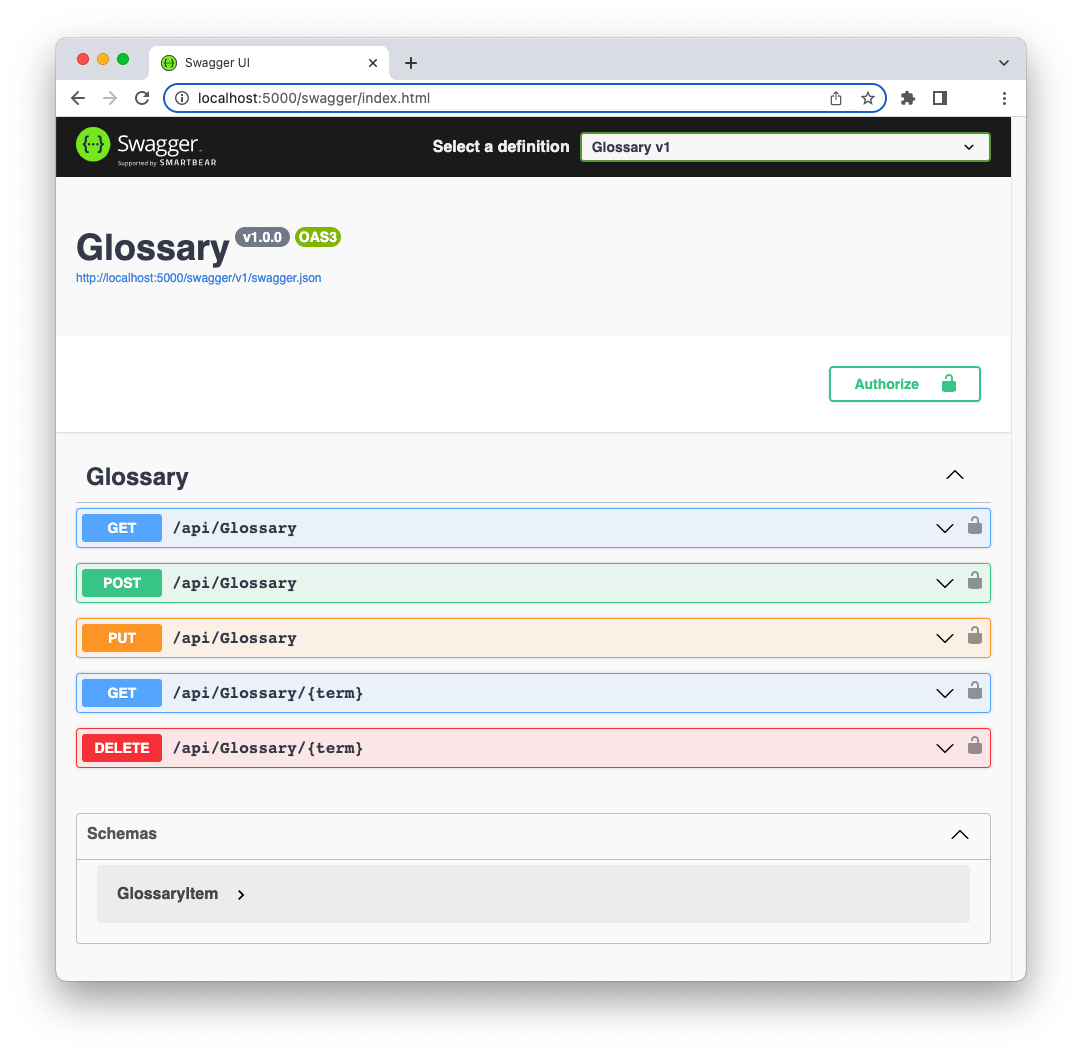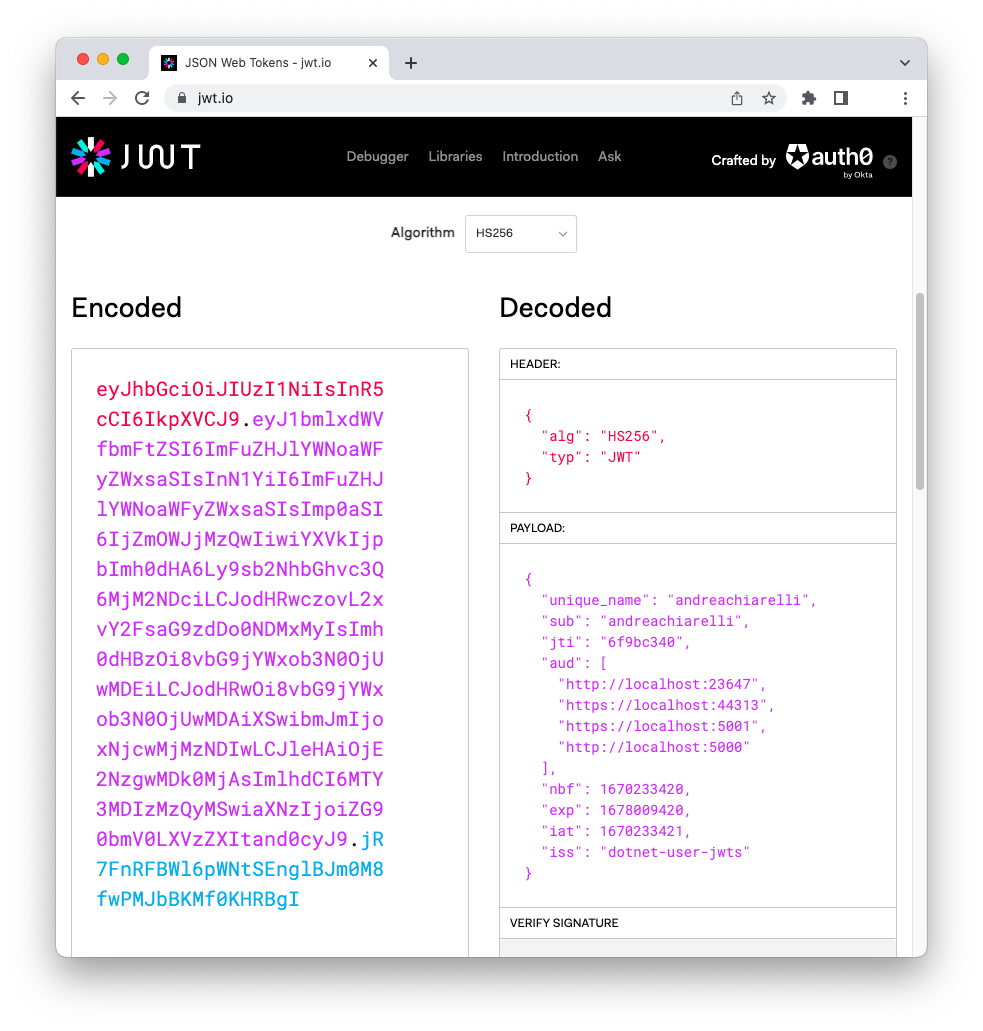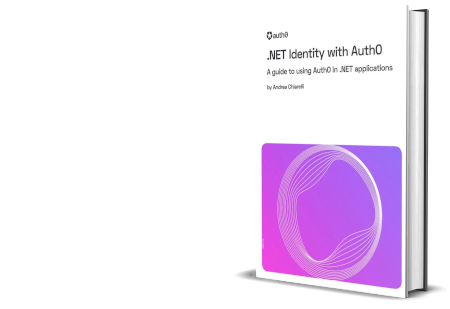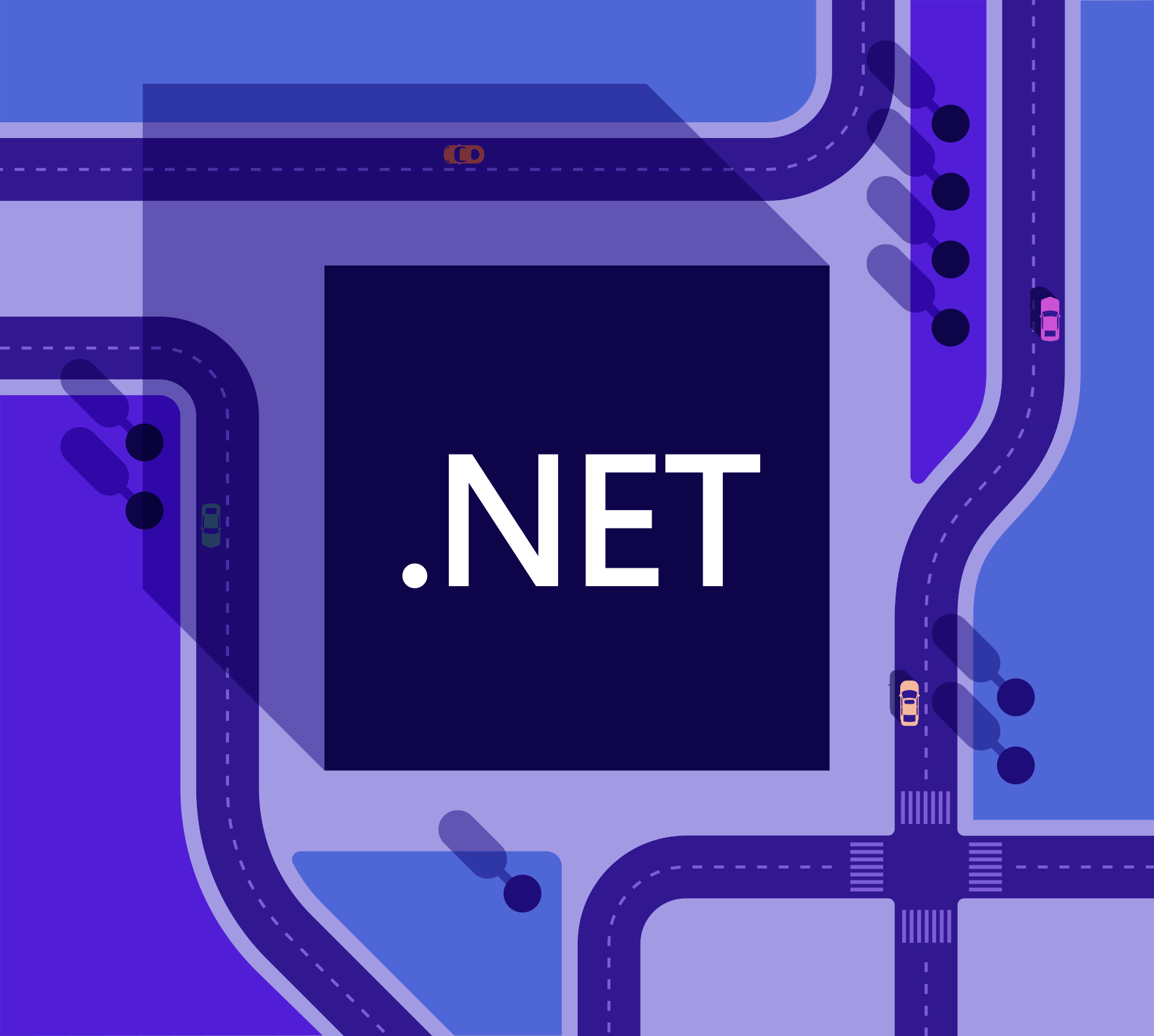Testing a protected Web API is not an easy task. At the very least, you need to configure an authorization server, such as your Auth0 tenant, configure your app, and get specific access tokens for your authorization scenarios. This implies several back and forths between your development environment and the Auth0 dashboard (or any other authorization server backend), which may be time-consuming, error-prone, and require an Internet connection, of course. The
user-jwtsMeet the user-jwts
Tool
user-jwtsThe
user-jwtsThe tool simplifies the interactive testing process of your protected API. Its general syntax is as follows:
dotnet user-jwts [options] [command]
You can pass commands to the tool to specify how to manage your JWT tokens and options to work with projects or solutions. In the following sections, you will learn the main commands you may need for testing your ASP.NET Core Web API. For a complete reference to the commands and options available, check out the official documentation.
Set Up Your Project
You will learn how to use the
user-jwtsgit clone https://github.com/auth0-blog/glossary-aspnet-core-webapi
You will find the project in the
glossary-aspnet-core-webapidotnet run
Then, point your browser to the https://localhost:5001/swagger URL. You should get the following page:

The Web API provides a few endpoints that allow you to manage a glossary of terms. This is a slightly modified application coming from this article about using permissions with ASP.NET Core Web APIs.
You can perform the typical CRUD (Create, Retrieve, Update, Delete) operations on a list of term definitions. The endpoints are protected, and each operation requires an access token with different permissions:
- The GET method on the
and the/api/Glossary
endpoints requires an access token, but it doesn't care about specific permissions./api/Glossary/{term} - The POST and PUT methods on the
endpoint require an access token with/api/Glossary
andcreate:term
permissions.update:term - The DELETE method on the
endpoint requires an access token with/api/Glossary/{term}
permission.delete:term
The ASP.NET Core Web API application provides a Web UI for interacting with it, but in this article, we will use
to make HTTP requests just to be consistent with the CLI nature of thecurltool. Feel free to use the tool you prefer to make your HTTP requests.user-jwts
If you try to call these endpoints without an access token, you will get an "unauthorized" response message. For example, assume you call the
/api/Glossarycurl -i https://localhost:5001/api/glossary
You will get the following error message as a response:
HTTP/1.1 401 Unauthorized Content-Length: 0 Date: Mon, 05 Dec 2022 09:28:37 GMT Server: Kestrel WWW-Authenticate: Bearer
This message tells you that you are not authorized to call that endpoint, and you must pass a bearer token as a credential (
WWW-Authenticate: BearerYou can read this article to learn more about the different HTTP response messages you can receive from a protected web API.
Create a Simple JWT
Let's put the
user-jwtsdotnet user-jwts create
You will get an output similar to the following:
New JWT saved with ID '6f9bc340'. Name: andreachiarelli Token: eyJhbGciOiJIUzI1NiIs... omitted content...HRBgI
As you may guess, the
user-jwtsThe output's first line provides you with the identifier of the newly created JWT. Take note of it. You will learn how to use it later on.
The second line displays your username on the current machine. This is the user the JWT is issued to.
Finally, the third line shows the token's actual content. Take note of it. We are going to use it soon.
Infrastructure initialization
Before using the token issued by
user-jwtscreateThe first time you run the
createGlossary.csprojUserSecretsId<Project Sdk="Microsoft.NET.Sdk.Web"> <PropertyGroup> <TargetFramework>net7.0</TargetFramework> <!- ...other elements... --> <UserSecretsId>50960023-f197-4aa0-bfa5-1ad79803ff6f</UserSecretsId> </PropertyGroup> <!- ...other elements... --> </Project>
The next time you use the
user-jwtsUserSecretsIdCheck out this article to learn more about the Secret Manager tool and how to use it.
In addition, the
user-jwtsappsettings.Development.jsonAuthentication// appsettings.Development.json { "Logging": { "LogLevel": { "Default": "Information", "Microsoft": "Warning", "Microsoft.Hosting.Lifetime": "Information" } }, // 👇new section "Authentication": { "Schemes": { "Bearer": { "ValidAudiences": [ "http://localhost:23647", "https://localhost:44313", "https://localhost:5001", "http://localhost:5000" ], "ValidIssuer": "dotnet-user-jwts" } } } // 👆new section }
This new section is one of the new authentication and authorization features introduced by .NET 7. It greatly simplifies how authentication and authorization middleware is configured.
You notice that a set of valid audiences are defined. They represent your API and, in this case, match the URLs of your application.
As a valid issuer of the token, you find the value
dotnet-user-jwtsInspect your token
Now, copy the value of the JWT issued by
user-jwts
As you can see, this is a very simple token containing just minimal information about the user, the audience (i.e., the API it is meant for), the issuer, and some dates to control its validity.
Interested in getting up-to-speed with JWTs as soon as possible?
Download the free ebook
Keep in mind that tokens issued by the
tool are meant to be used only in your development environment for testing purposes.user-jwts
Use the access token
Now that you know a little bit more about the
user-jwtsStop and run the ASP.NET Core Web API application again to make sure it loads the new settings. Retype the curl statement to call the
/api/GlossaryAuthorizationcurl -i https://localhost:5001/api/glossary \ -H 'Authorization: Bearer eyJhbGciOiJIUzI1NiIs... omitted content...HRBgI'
As a response, you will get the list of terms defined in the glossary.
Cool! You unblocked the first endpoint. You can use the same JWT to call the
/api/Glossary/{term}/api/Glossary/jwtHowever, if you try to call the API by using the other HTTP methods, you will get a "403 Forbidden" error message. For example, try to add a new term to the glossary by making a POST request as the following:
curl -i 'https://localhost:5001/api/glossary' \ -H 'Authorization: Bearer eyJhbGciOiJIUzI1NiIs... omitted content...HRBgI' \ -X 'POST' \ -H 'Content-Type: application/json' \ -d '{ "term": "test", "definition": "This is a test" }'
You will see the following response:
HTTP/1.1 403 Forbidden Content-Length: 0 Date: Mon, 05 Dec 2022 11:28:14 GMT Server: Kestrel
It means that you provided an access token as required, but you don't have the needed permissions to make this request. In other words, your access token must contain the
create:termCreate a JWT With Custom Claims
Let's create an access token with the required permission. Be sure to be in the root folder of your project and type the following command in your terminal window:
dotnet user-jwts create --claim permissions=create:term
This command asks the
user-jwtspermissionscreate:termNew JWT saved with ID '3ac99ee7'. Name: andreachiarelli Custom Claims: [permissions=create:term] Token: eyJhbGciO...omitted content...JQwewWYg
As you can see, you obtain a new token with its own identifier. The custom claim you added is specified as well. You can inspect the new token in jwt.io to check its content.
By using this new access token in your POST request, you will be able to add a new term to the glossary:
curl -i 'https://localhost:5001/api/glossary' \ -H 'Authorization: Bearer Bearer eyJhbGciO...omitted content...JQwewWYg' \ -X 'POST' \ -H 'Content-Type: application/json' \ -d '{ "term": "test", "definition": "This is a test" }'
In the same way that you added a custom claim, you can also specify scopes, roles, audience, etc. Check out the documentation to learn what options to use for each specific element.
Leverage Auth0's authentication and authorization services in your .NET applications.
DOWNLOAD THE FREE EBOOK
Display Issued Tokens
Beyond creating customized JWTs, the
user-jwtsdotnet user-jwts list
The command's output will look like the following:
User Secrets ID: '50960023-f197-4aa0-bfa5-1ad79803ff6f' ------------------------------------------------------------------------------------------ | ID | Scheme | Audience(s) | Issued On | Expires On | ------------------------------------------------------------------------------------------ | 6f9bc340 | Bearer | http://localhost:236 | 2022-12-05T09:43:41. | 2023-03-05T09:43:40. | | | | 47, https://localhos | 0000000+00:00 | 0000000+00:00 | | | | t:44313, https://loc | | | | | | alhost:5001, http:// | | | | | | localhost:5000 | | | ------------------------------------------------------------------------------------------ | 3ac99ee7 | Bearer | http://localhost:236 | 2022-12-05T12:05:35. | 2023-03-05T12:05:34. | | | | 47, https://localhos | 0000000+00:00 | 0000000+00:00 | | | | t:44313, https://loc | | | | | | alhost:5001, http:// | | | | | | localhost:5000 | | | ------------------------------------------------------------------------------------------
Each row in this table corresponds to an issued JWT. To learn about the details of a specific JWT, take note of its identifier and run a command like the following:
dotnet user-jwts print 3ac99ee7
You will get an output similar to this:
Found JWT with ID '3ac99ee7'. ID: 3ac99ee7 Name: andreachiarelli Scheme: Bearer Audience(s): http://localhost:23647, https://localhost:44313, https://localhost:5001, http://localhost:5000 Not Before: 2022-12-05T12:05:34.0000000+00:00 Expires On: 2023-03-05T12:05:34.0000000+00:00 Issued On: 2022-12-05T12:05:35.0000000+00:00 Custom Claims: [permissions=create:term] Token: eyJhbGciO...omitted content...JQwewWYg
You may notice all the main details of the token. You can also ask for the decoded version of the token by adding the
--show-alldotnet user-jwts print 3ac99ee7 --show-all
In this case, a complete output will be shown:
Found JWT with ID '3ac99ee7'. ID: 3ac99ee7 Name: andreachiarelli Scheme: Bearer Audience(s): http://localhost:23647, https://localhost:44313, https://localhost:5001, http://localhost:5000 Not Before: 2022-12-05T12:05:34.0000000+00:00 Expires On: 2023-03-05T12:05:34.0000000+00:00 Issued On: 2022-12-05T12:05:35.0000000+00:00 Scopes: none Roles: [none] Custom Claims: [permissions=create:term] Token Header: {"alg":"HS256","typ":"JWT"} Token Payload: {"unique_name":"andreachiarelli","sub":"andreachiarelli","jti":"3ac99ee7","permissions":"create:term","aud":["http://localhost:23647","https://localhost:44313","https://localhost:5001","http://localhost:5000"],"nbf":1670241934,"exp":1678017934,"iat":1670241935,"iss":"dotnet-user-jwts"} Compact Token: eyJhbGciO...omitted content...JQwewWYg
The
--outputuser-jwtsdotnet user-jwts create --output token
This command will return only the token's value. No identifier, no username as in the usual output. This output could be useful in case you want to write a script where the token is stored into a variable and then used in a curl request. Beyond
tokenjsonFinally, you can also use the
removecleardotnet user-jwts remove 3ac99ee7dotnet user-jwts clearIntegrate with Auth0
You tested your ASP.NET Core Web API application on your local machine using customized access tokens issued by the
user-jwtsIf you have ever tested a protected Web API using tokens issued by a real authorization server, you have experienced how time-consuming it is. Take a look at the tests explained in this article's section to get an idea.
The
user-jwtsYou don't need to change your code. You just have to deal with configuration, both on the Auth0 and your application sides.
Auth0 configuration
Let's start by registering your Web API with Auth0. Sign up for a free account if you don't have one yet. Then, in the Auth0 dashboard, move to the API section and follow these steps:
- Click on Create API.
- Provide a friendly name for your API (for example, Glossary API) and a unique identifier in the URL format (for example, https://glossary.com).
- Leave the signing algorithm as RS256 and click the Create button.
These steps make Auth0 aware of your Web API and allow you to control access.
Then, define the permissions required by your API as described in this section.
Web API configuration
Let's configure your Web API now. Create a new file named
appsettings.Auth0.json// appsettings.Auth0.json { "Logging": { "LogLevel": { "Default": "Information", "Microsoft": "Warning", "Microsoft.Hosting.Lifetime": "Information" } }, "Authentication": { "Schemes": { "Bearer": { "Authority": "https://YOUR_AUTH0_DOMAIN", "ValidAudiences": [ "YOUR_UNIQUE_IDENTIFIER" ], "ValidIssuer": "YOUR_AUTH0_DOMAIN" } } } }
Replace the placeholders YOURAUTH0DOMAIN and YOURUNIQUEIDENTIFIER with the respective Auth0 domain and API identifier from the Auth0 dashboard. Notice that this time you have an additional key:
Authorityuser-jwtsRun the right configuration
Now you have two configurations for getting tokens in your ASP.NET Core Web API:
- One is based on the
configuration file and uses theappsettings.Development.json
tool.user-jwts - One is based on the
configuration file and uses Auth0.appsettings.Auth0.json
You can decide what configuration to use by leveraging the standard environment configuration approach.
In other words, if you run your application with
dotnet runappsetting.Development.jsonuser-jwtsTo make your Web API accept tokens issued by Auth0, you have to run your application with the following command:
dotnet run --environment Auth0
In this case, the
appsetting.Auth0.jsonWhile your Web API runs with the Auth0 settings, test it as explained in this article's section.
You should obtain the same result as you got with the local tests.
Try out Auth0 authentication for free.
Get started →Summary
Throughout this article, you learned how to use the
user-jwtsThe ability to get the token output in specific formats through the
--outputWhat is your experience in using the
user-jwtsAbout the author

Andrea Chiarelli
Principal Developer Advocate
I have over 20 years of experience as a software engineer and technical author. Throughout my career, I've used several programming languages and technologies for the projects I was involved in, ranging from C# to JavaScript, ASP.NET to Node.js, Angular to React, SOAP to REST APIs, etc.
In the last few years, I've been focusing on simplifying the developer experience with Identity and related topics, especially in the .NET ecosystem.
